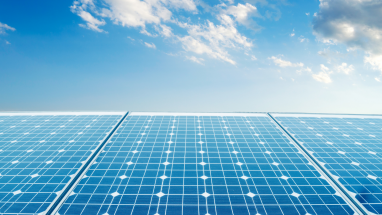
A further and fundamental step towards the construction of zero-impact buildings through the construction of photovoltaic devices that can be aesthetically integrated into buildings (building integrated photovoltaics) is made possible thanks to the research carried out by a team of Italian researchers of the University of Milano - Bicocca, the Company Glass to Power SpA and the CNR Institute of Structure of Matter.
An innovative material for the realization of transparent luminescent solar concentrators (LSC) integrated into photovoltaic windows with high efficiency has been synthesized in the laboratories of the Department of Materials Science of the University of Milan-Bicocca through an innovative, solventless process with low environmental impact. This strategy has the important advantage of reducing the weight ratio between waste and product (a metric known as the E-factor), one of the most common sustainability index in organic synthesis. In the specific case, the E Factor demonstrated is 50 times lower than that associated with other molecules of comparable efficiency. The innovative materials thus created were then used by the researchers of Glass to Power to manufacture photovoltaic windows with industrial techniques, confirming the applicative potential of the discovery.